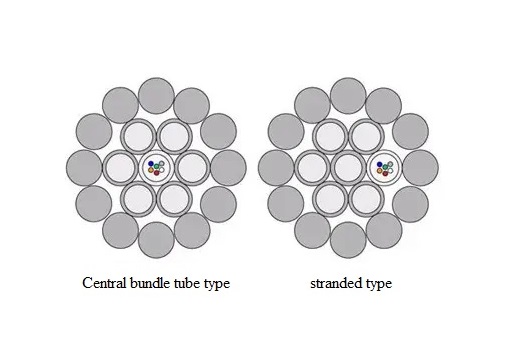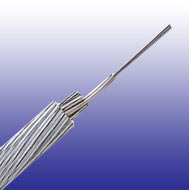Optical Ground Wire (OPGW) is a special type of power conductor that serves the dual purpose of optical fiber communication and power transmission. It embeds optical fiber cables within a metal conductor, providing reliable communication capabilities for power transmission lines.
OPGW fiber cables are installed on transmission and distribution lines to transmit voice, data, and video communication signals. They are particularly used in lighting waveform monitors, high-level test lines, data maintenance for information systems, power lines for protection systems, power lines for operational systems, and monitoring systems for unmanned monitoring stations.

There are two main structures of composite optical cables:
Central tube type: The optical fibers are loosely placed in a sealed, water-blocking stainless steel tube filled with water-blocking gel. The steel tube protects the fibers from working in insulation in various environmental conditions. An optional aluminum layer surrounds the tube. The stainless steel is positioned in the center of the cable and is protected by one or multiple layers of aluminum-clad steel and aluminum wrapping wires. The aluminum-clad steel wires are distributed in a trapezoidal arrangement around the optical core to form a compact structure. The metallic wires provide mechanical strength to withstand harsh installation and operating conditions, controlling temperature rise during short circuits to achieve conductivity.
An OPGW fiber cable can accommodate a maximum of 48 optical fibers. Despite the high fiber count in a single tube, each fiber can be clearly distinguished using a color and numeric ring marking system. Its compact design, high mechanical strength, and fault current rating within a smaller diameter enable excellent performance in terms of vertical tension.
Stranded type: The optical fibers are loosely placed in a sealed, water-blocking stainless steel tube filled with water-blocking gel, and two or three stainless steel tubes are helically distributed within the inner layers of the multi-layered cable.
Stranded-type OPGW fiber cables are mostly used in situations requiring a high fiber count, generally exceeding 48 and reaching a maximum of 144. They can meet the requirements of large cross-sections and high current capacity.

Support for communication networks: OPGW fiber optic cable provides a reliable communication network for power transmission lines, enabling power companies to monitor line status, remote control and scheduling, as well as fault detection and troubleshooting in real time. It also serves as a foundation for smart grids and power system automation.
Application of fiber optic sensing technology: The optical fibers in OPGW can be used for various sensing technologies such as temperature monitoring, vibration detection, and fiber optic temperature measurement. These sensing technologies can help power companies promptly identify line issues and faults and perform preventive maintenance.
Space utilization efficiency: By integrating optical fibers into power conductors, OPGW makes efficient use of the conductor's space. This design reduces the need for additional communication lines and towers, improving the compactness and efficiency of the transmission lines.
Interference resistance: OPGW optical communication systems have excellent electromagnetic interference resistance, enabling stable operation near high-voltage transmission lines while maintaining clear and reliable communication signals.